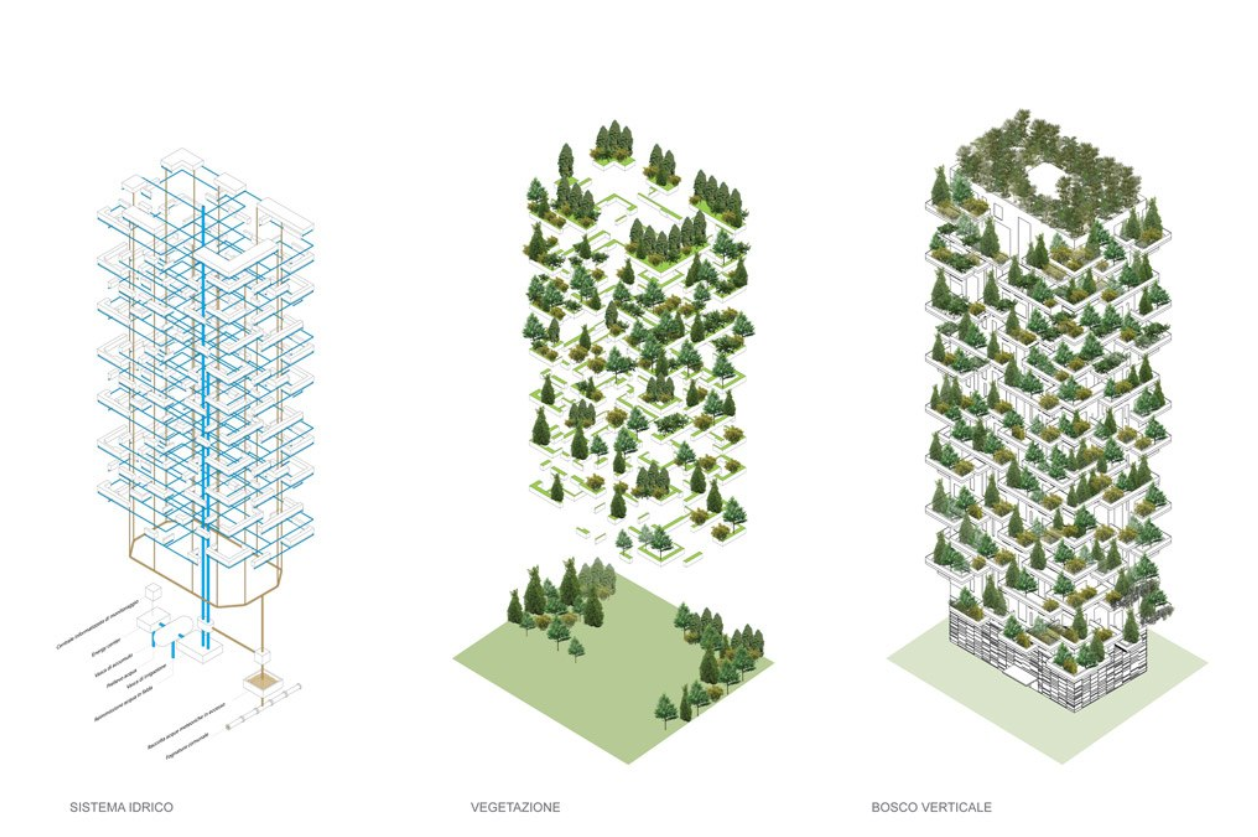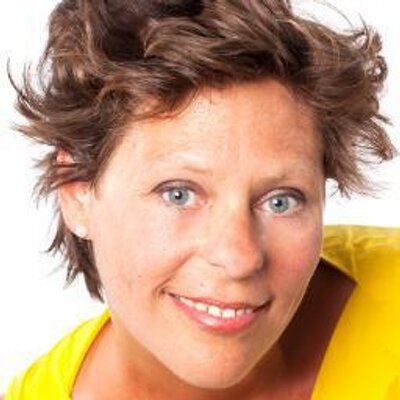
Do you prefer to sleep in the forest or in the city? In Milan, you can do both. The Bosco Verticale (Vertical Forest) comprises two gigantic residential towers with outdoor terraces full of trees and plants. Since 2014, Italian architect Boeri has been calling this the start of the city of the future. Meanwhile, luxurious urban vertical forests and walls have popped up all over the world. In the Netherlands, Eindhoven is one of the first cities to build such a tower. The green tower at Strijp-S – the old Philips Natlab site – has been under development since 2019 in collaboration with the Trudo Foundation. What is special about this one, is that this vertical forest is committed to social housing.
We have been talking about Smart Cities for years. This is a broad concept, for researchers, developers, designers and urban planners. The question remains: who is going to pay for it? The cost of promoting a smart city seems to lie primarily with the (municipal) government. But since green infrastructure means a lot to our biodiversity, we don’t want to exhaust the earth, and we want our children to have a nice place to live, we keep looking for smart solutions in the built-up environment. A ‘smart city’ calls for multiple perspectives. With smart logistics, emission-free transport solutions, ICT, new technologies and green spaces in the city, we can build better cities together. Creative thinking is at the heart of the collaboration.
Actual social embedding of technology revolves around behavior
But the government can offer this, ultimately we ourselves must see and experience the benefit of ‘sustainable’ coexistence in the city. Technological solutions are often available, but the application and acceptance of technology hinges on the behavior of local residents. This relates to questions such as: how do you make technology ‘productive’ and accepted in everyday life? Who pays for the technology in smart neighborhoods? Why should people spend money on solar panels and a heat pump? When will people actually buy and use technology, and why won’t they? How do we make money, and who actually makes money from technological solutions for sustainability?
This is akin to the questions that need to be asked when measuring the maturity of technology in an innovation process (Technology Readiness levels – TRLs). A lot of creative key methodologies (also called Key Enabling Methodologies – KEMs) can be used to tackle this transition issue.
Green Trudo Tower at Strijp-S in Eindhoven; a better living environment in the city
Societal questions about sustainability and the built-up environment are of global concern. The Green Deal spurs European countries into action. And perhaps stimulates us to change our behavior at home too. Or to change our homes. Take green roofs, for example. This Sunday, June 6, is World Green Roof Day. In the Netherlands, the Rotterdam Roof Days are organized to highlight the fact that urban afforestation improves the living environment of the city.
The green Trudo Tower at Strijp-S in Eindhoven has space on 19 floors for 125 rental homes for starters. It will be the world’s first vertical forest for social housing. The lofts measuring 50m2 all have a balcony and two large flower boxes. These will accommodate up to 125 mature trees, shrubs and plants. Housing corporation Sint Trudo is commissioning the residential tower block – including the greenery – and will continue to be responsible for its maintenance.
Green infrastructure in Italy and the Netherlands
Denise Houx, architect and specialist in Green Infrastructure at ROOFmatters in Italy comments, “Green roofs are one of the tools to fight climate change. We make our cities too hot by using too many hard surfaces. During a downpour after a long drought, the amount of rainwater per second is too much for our existing sewage system. Smart planting on the roof and technology is useful. A reservoir and mini levee system under the water-retaining substrate layer regulates distribution and water levels. Sensors help the roof drain more slowly. Greenery from plants on the substrate layer of a roof also means more cooling and an increase in air quality. And if a third layer of solar panels is installed above the greenery, the energy output is even more profitable.”
“We’ve heard about Dutch green roof technology that incorporates photovoltaic solar panels that you can walk on. That would mean terraces with paths that generate energy. If you then grow your own fruit and vegetables on the roof, you have quadruple the pleasure out of unused roof space. In terms of logistics, fewer trucks would then be needed in the city. But it is not quite that far yet. The Brooklyn Grange was created on the Hudson in New York, a real farm on top of the roof of an industrial harbor building. Unfortunately, the earnings are still only from renting out the green roof for weddings.”
Maintenance of green roofs
The biggest challenge for green residential towers is the maintenance of all the greenery. The Trudo Tower will soon be a green oasis in the stony surroundings of Strijp-S in Eindhoven Good for about 50,000 kilos of CO2 absorption and 13,750 kilos of oxygen on an annual basis. All the houses will be well insulated, and the trees will provide shade and cooling in the summer. The experience of the Milanese is undoubtedly also shared by the people of Eindhoven.
When the first vegetation was planted in Milan, all the plants died. Trees were replaced by new ones with roots that were already used to growing in containers. I wonder who will come to water the plants. No resident in Milan is actually allowed to handle the watering can themselves. A ‘flying gardener’ is suspended permanently from long steel cables above the hanging gardens of the Bosco Verticale.
The planters contain an intelligent membrane that knows whether the plant is thirsty or hungry. Water and minerals are then automatically administered directly into the planter. Perhaps Eindhoven will be the first to have robots on its residential tower? With the use of sensors, a robot could measure each plant for its health or signs of disease. Or use a soil analysis to see where the soil is too dry. Or the residents could simply keep an eye on the color of their trees themselves.
And outside the green tower around Eindhoven…?
Whether there is a lot of sunshine in the country or not, the government can support residents in helping to create a resilient city. Denise Houx: “Green roofs are a contributor to the Step Stone system for biodiversity in the city. These new landscapes should continue on ‘spanning the cities’, so to speak. In Italy, the government is currently even offering up to 110 percent financing for making your home completely sustainable. Think about an extra insulation layer, the purchase of a new heat pump, solar panels, new window frames and the construction of a green roof.”
Dutch municipalities are working diligently on this. The municipality of Gorinchem, to name one, offers a subsidy of 25 euros per square meter of solar panel. This is a good start. Instead of thinking in terms of a discount on a purchase price, we need to think in terms of a kind of Total Cost of Ownership. As in, the total amount of expenses for the purchase over an entire cycle of use. If your house is sold, the occupant after you should be able to reap the benefits of the investment. We take care of the planet together. With the homeowners’ association, and with support from the local government. And with the help of thorough explanations of what the technology can do for you. The fact remains that you shouldn’t need to cough up the initial investment. In Italy, action has already been taken on this.
It used to be so easy to turn the green countryside into a grey area, but now it has to be the other way around! Preventing a disaster by cooling the city and keeping water flows manageable is much cheaper for the government than rebuilding a city after a disaster. If we can now strike a balance in the relationship between nature and construction, it will be a win-win situation. So invest in green infrastructure, with technology as a tool.
About this column
In a weekly column, alternately written by Bert Overlack, Eveline van Zeeland, Eugene Franken, Helen Kardan, Katleen Gabriels, Carina Weijma, Bernd Maier-Leppla and Colinda de Beer, Innovation Origins tries to figure out what the future will look like. These columnists, sometimes joined by guest bloggers, are all working in their own way to find solutions to the problems of our time. So tomorrow will be good. Here are all the previous articles.

